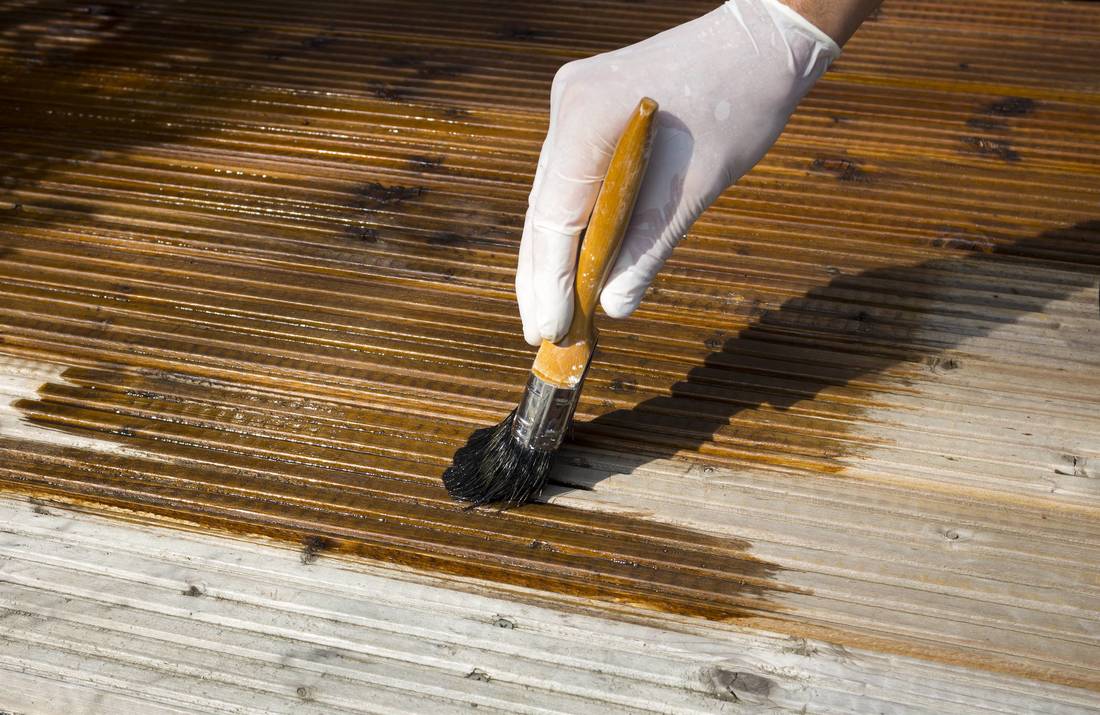Deck StainingWE GO TO GREAT LENGTHS FOR YOUR SPACE TO REACH IT FULL POTENTIAL
Whether you’re out at your cabin looking over the lake, in your backyard sitting in a hot tub, or in the front of your house waving at the neighbors, your deck is right there with you, looking beautiful. From barbecues to a lazy day with the family, decks are meant to be enjoyed - and that means they’re going to get walked on by muddy shoes, scuffed by furniture, and generally worn down, despite efforts you might make to prevent these things from happening.
|
|
Our decks are covered with a stain that serves multiple purposes: beautification and durability. A good stain will make the wood resistant to discoloration from the sun’s rays, and the stain itself can add a wide variety of colours to your deck; anything from a natural woody cedar to a deep blue can be achieved with staining, which uses a combination of pigments to add colour and mineral oils to seal the wood.
There are many different types of stain, each with their own combination of pigments, binders and additives. Oil-based stains will penetrate into the wood, which absorbs the oil; some oil-based stains, however, won’t penetrate some woods deeply enough, so it’s important to know what kind of wood your deck is made of and what oils your stain is composed of. Acrylic stains, conversely, do not penetrate the wood, but provide a protective layer - be mindful, however, that you apply these properly, or they can begin to peel rapidly, undoing your hard work. You might opt for eco-friendly stains, low in volatile organic compounds (VOCs); these do tend to be a bit more expensive than traditional stains, though. The most important thing to remember is that if your deck has already been stained, you should try to use the same type of stain when staining it again. |
|
You’ll want to consider how much of the wood’s grain you want to see once you’re done staining your deck; for a more natural look, you’ll want to opt for an oil stain with a small amount of pigment, so that the colour doesn’t obscure the wood grain. Should the wood’s grain not be important to you, you can opt for very pigmented stains; your deck can be basically any colour you can imagine.
|
|
Staining should be done in the right weather conditions; not too much sun, not too hot, not too cold. The deck must also be properly prepared before staining, especially if you’re changing the type stain; power-washing or stain remover might be in order, and you may need to sand the deck.
All in all, deck staining is essential to maintaining the integrity of your deck, but it’s also surprisingly complicated; the preparation that must be done, the conditions the staining must be completed in and the type of stain you should use can all differ depending on the wood your deck is made of, the stain you used before and the condition of the deck. At Madani Group, we have years of experience staining decks perfectly; we’ll help you pick the right colour and type, we’ll do the prepwork, and we’ll have your deck looking it’s best in time for the next family barbecue. You worked for your deck; let us make it work for you. |






